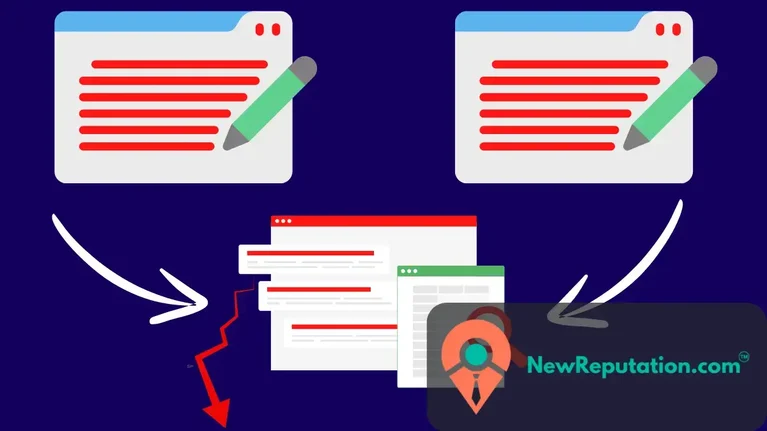Duplicate content means having the same or very similar content on different web pages or websites. This can include text, images, videos, and other digital content.
While duplicate content isn’t always bad, it can cause problems for search engine optimization (SEO).
Knowing what duplicate content is and how it affects your website is important for keeping a strong online presence.
How Does Duplicate Content Affect SEO?
1. Confusion for Search Engines
When search engines find duplicate content, they can’t tell which version is the best for a search. This confusion can make them show and rank the wrong page, reducing the visibility of the original content.
2. Lower Rankings
Duplicate content can split the SEO value across multiple pages instead of consolidating it into one authoritative page.
This fragmentation can lead to lower rankings for all instances of duplicate content, reducing the likelihood of appearing on the first page of search results.
3. Reduced Link Equity
Quality backlinks are a key indicator for ranking search results. The more relevant backlinks you have from trustworthy websites, the easier for Google to determine how to rank your website. However, duplicate content can decrease the value of these links.
4. Poor User Experience
When people search for information online, they want to find unique and valuable content. If users keep seeing the same content on different pages, users can grow frustrated, causing them to leave your site and look for better information elsewhere. As a result, this bounce rate can indicate that your information is not helpful and cause Google to show it less frequently.
What Are the Common Causes of Duplicate Content?
1. URL Variations
Different URLs can host the same content, such as www.example.com and example.com. Parameters added to URLs for tracking or session IDs can also create duplicate content issues.
2. Printer-Friendly Versions
Sites often provide printer-friendly versions of web pages that can be indexed as separate content by search engines.
3. Syndicated Content
Reposting articles, blog posts, or press releases on multiple sites can lead to duplicate content. While syndication can extend your reach, it must be managed carefully to avoid SEO penalties.
4. Scraped or Copied Content
Unethical practices, such as scraping content from other sites or copying large sections of text without permission, contribute to duplicate content problems.
5. Pagination Issues
When content is spread across multiple pages (pagination), search engines may index each page separately, leading to concerns about duplicate content.
How Can Duplicate Content Be Identified?
1. Google Search Console
Google Search Console is a powerful tool for identifying duplicate content. The “Coverage” report can highlight issues related to duplicate content, including indexed pages that do not appear in search results.
2. Site Audits
Regular site audits using SEO tools like SEMrush, Ahrefs, or Moz can help identify duplicate content. These tools can scan your website and provide detailed reports on any issues with duplicate content.
3. Copyscape
Copyscape is a dedicated tool for detecting duplicate content. It can scan the web for copies of your content and alert you to potential issues.
4. Manual Checks
You can find duplicate content by searching for unique phrases from your work in search engines. While this method can take time, it’s helpful for checking specific pieces of content.
Contact NewReputation for Expert Online Reputation Management
Duplicate content can be a big problem for website owners, but it can be handled with the right methods and tools. If you’re dealing with duplicate content or other online reputation issues, NewReputation can help. Our experts specialize in SEO and online reputation management to keep your website strong in search results. Contact us today to find out how we can help you reach your online goals.
The NewReputation Help Center discusses brand reputation, online PR, search engine marketing, content marketing, and much more.

